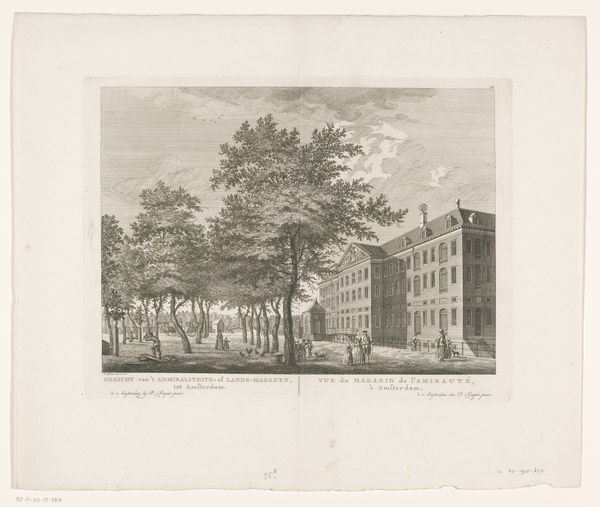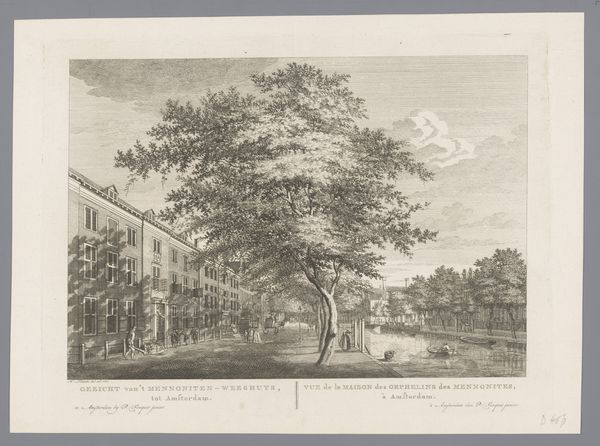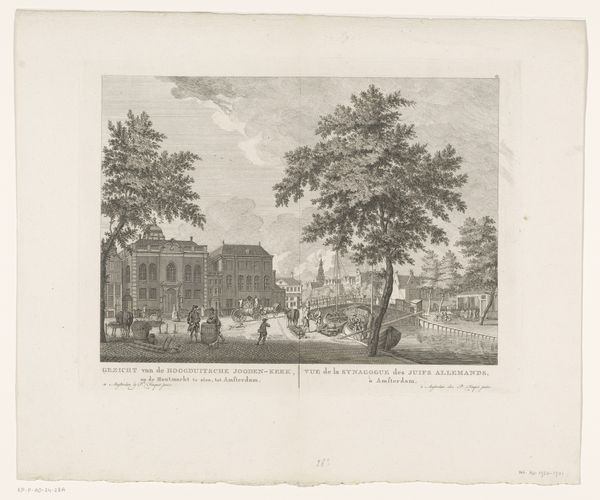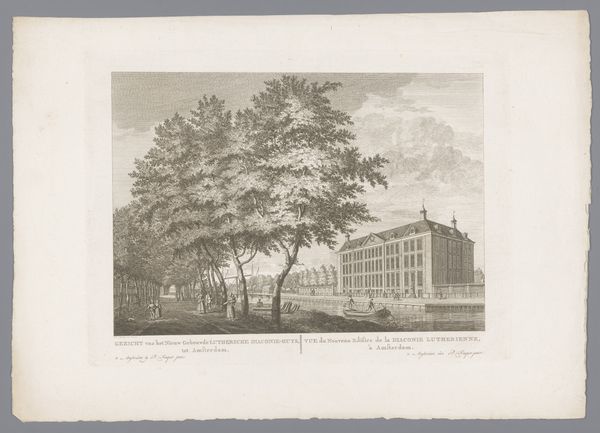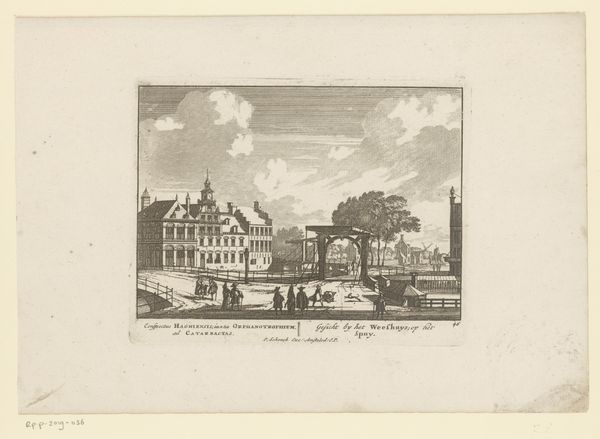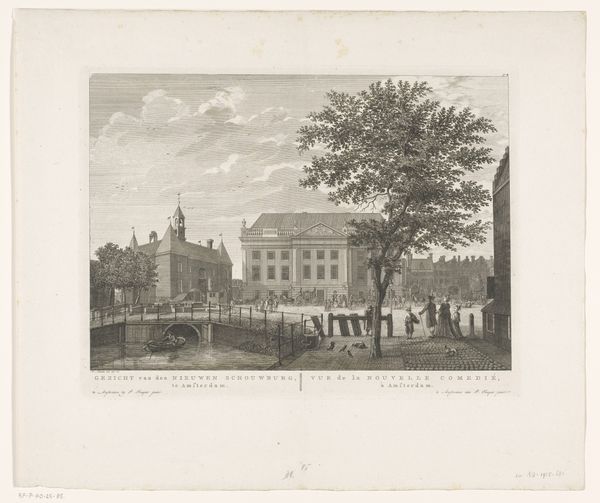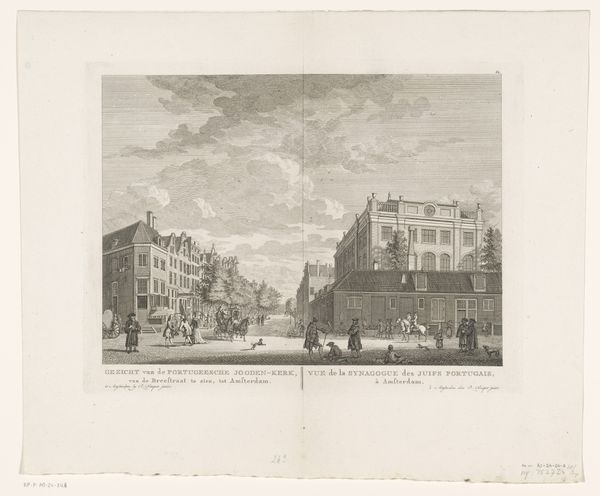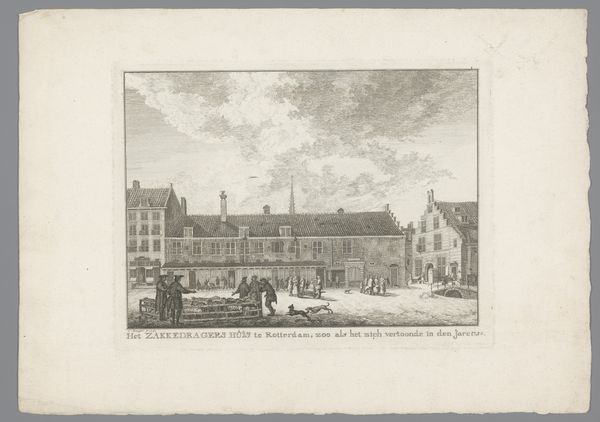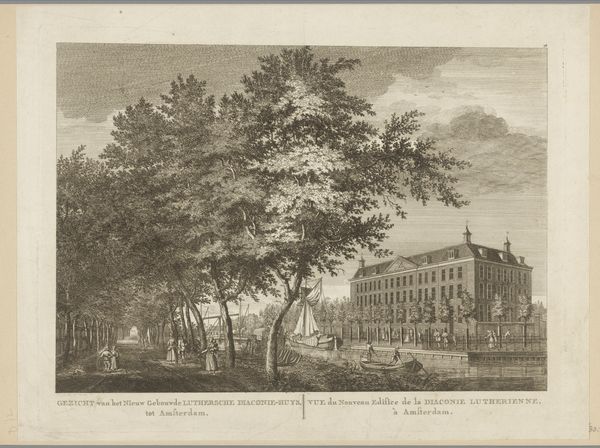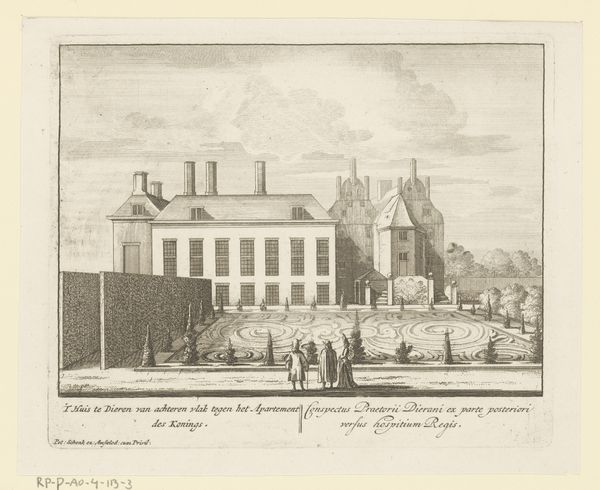
print, engraving
#
dutch-golden-age
# print
#
landscape
#
cityscape
#
history-painting
#
engraving
Dimensions: height 283 mm, width 372 mm
Copyright: Rijks Museum: Open Domain
Editor: This is "Gezicht op de Botermarkt in Amsterdam," or "View of the Butter Market in Amsterdam," an engraving dating from 1774-1783, by Caspar Jacobsz. Philips. I find it interesting how the artist captured everyday life through what appears to be an inexpensive and widely accessible medium, a print. What are your initial thoughts on the materiality and accessibility of this work? Curator: The choice of engraving is critical. It signifies a shift towards broader consumption of imagery. Think about the implications: mass production, accessibility to a wider audience beyond the elite. This print served a different social purpose than an oil painting displayed in a wealthy home. We need to consider what meanings and messages the piece conveyed, not just to an individual patron but to a collective viewership engaging with the public spaces represented within. Editor: That's fascinating. It's not just about *what* is shown but *how* it's distributed. Does the depicted marketplace also offer insight into the economics of the time? Curator: Absolutely. Marketplaces were hubs, where agricultural goods and materials intersected. What does it tell you that it’s being recorded, produced, and commodified as an image for purchase? The details of labor, the types of goods traded – all indicators of Amsterdam’s position in a global network. This market’s very architecture is materialized power. What might its placement and size suggest? Editor: Perhaps its grandeur implies the market's, and by extension Amsterdam’s, economic strength and importance. Curator: Exactly! Considering all the raw materials available through trade. These processes of extracting resources from around the world and turning them into goods in the city are integral to how Amsterdam created value. The print is but another example. So this print helps us rethink what the term landscape could mean. Editor: It certainly prompts a much broader way of interpreting the landscape through economic and material relationships. Curator: Precisely. And that the act of producing and consuming such imagery shaped people’s understanding of place and commodity in profound ways.
Comments
No comments
Be the first to comment and join the conversation on the ultimate creative platform.
